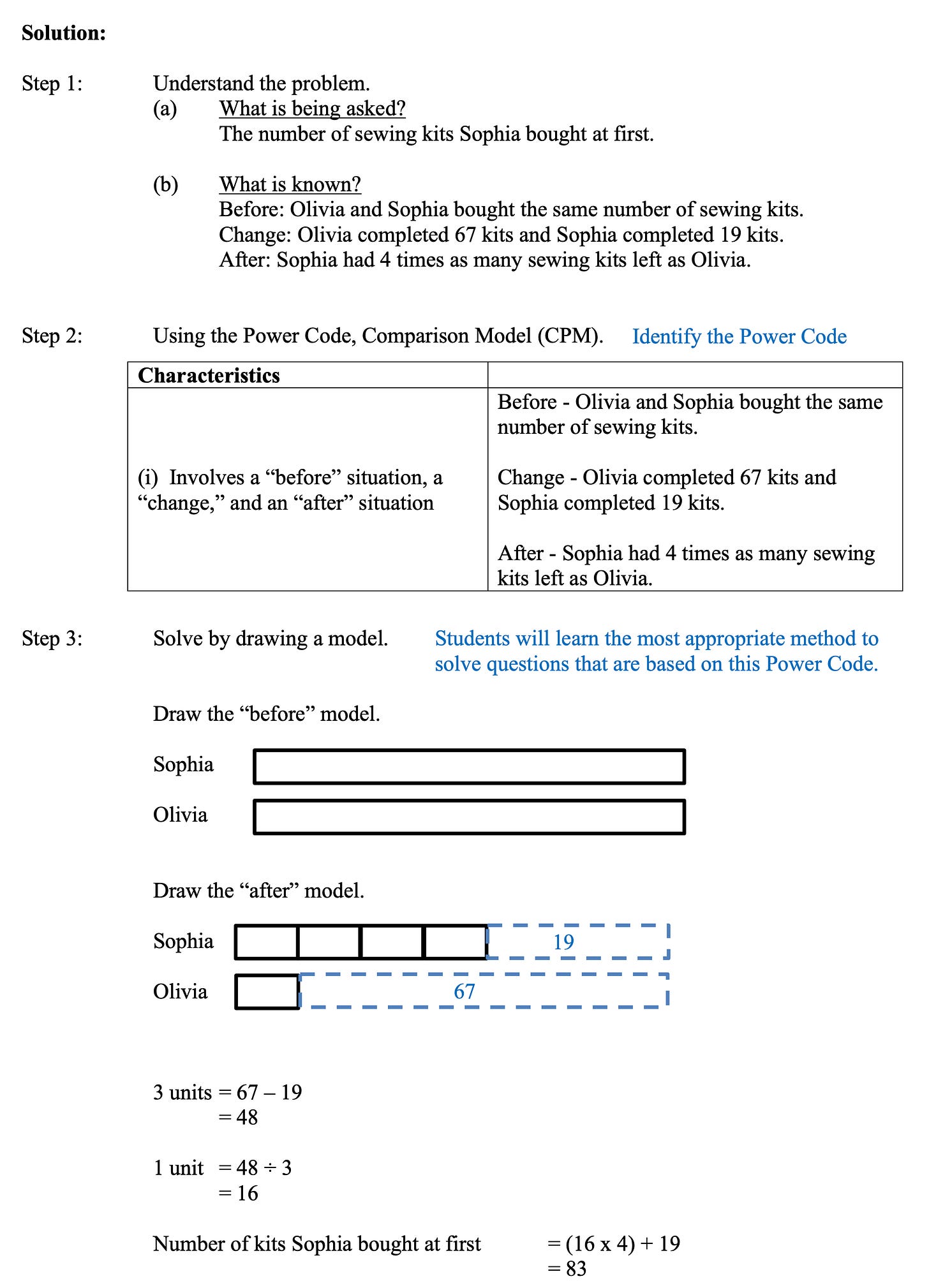Problem sums can be tough...
But our structured problem-solving strategies, known as Power Codes, help make them easier to understand. Here are some practice questions for you to try out!
Many students struggle with problem sums. That’s where our Mind Stretcher Power Codes come in—structured problem-solving strategies that help students recognise question types and solve them efficiently and accurately.
Here’s how it works:
Analyse the question carefully
Identify the right Power Code by linking clues from the question
Apply the Power Code to solve the problem
To support students further, our upcoming MS Power Codes Workshop (happening this week on 27 April) will walk them through these problem-solving strategies.
Let’s take a look at 6 common PSLE problem sums, and how Power Codes can make solving them much more manageable! Once you’re familiar with the Power Codes, here are some practice questions with solutions for you to try out.
Part-Part-Whole Model (PPW)
The part-part-whole model is a concept of how a whole can be split into parts. It allows you to see the link between the whole and the component parts, which then helps you to make the connections between addition and subtraction. Inherently, this Power code by itself is not a complicated one to understand but it forms the foundation to which other Power codes are dependent on.
Question: On Saturday, Mrs Tan used 4 1/5 kg of flour to make pasta. On Sunday, she used 5 3/4kg of flour to make some pizzas. What is the total mass of flour used by Mrs Tan for both days?
Fractions Of the Remainder (FOR)
This Power code is derived from the part-part-whole model (PPW) Power code. In many instances, problems which require the use of this Power code have the word ‘remainder’ embedded in them. You can use either the PPW model method or the branching method to solve such problem.
Question: Mrs Tam spends 1/4 of her money on a jumpsuit and 2/5 of it on a laptop bag. She then spends 1/5 of her remaining money on some bath towels. She was left with $336 in the end. Find the amount of money she had at first.
Comparison Model (CPM)
Comparison bar models are particularly useful when finding the differences between amounts, hence helping to reinforce the idea of using subtraction to find the difference. They also help you to avoid the misconception that ‘fewer’ will always mean subtraction and ‘more’ means addition.
Question: Bob had $645 more than Jane at first. After Jane gave Bob $125, Jane had 2/7 as much money as Bob. How much did Jane have at first?
Before-Change-After (BCA)
This heuristic is used in problems where there is a change, bringing about a 'before' situation and an 'after' situation. You will need to weigh up the two situations in order to understand the problems fully and find a way to solve them. It is usually combined with the drawing of bar models to help you visualise the problems.
Question: Olivia and Sophia bought the same number of sewing kits. Olivia completed 67 kits and Sophia completed 19 kits. In the end, Sophia had 4 times as many sewing kits left as Olivia. How many sewing kits did Sophia buy at first?
Unchanged Total (UT)
This Power code is derived from a combination of the comparison model (CPM), and/or the before-change-after (BCA) Power codes. It is applicable when the problems deal with two variables transferring quantities to each other leaving the total unchanged. It can be a one-way or two-way transfer. In a one-way transfer, one variable transfers some quantities to the other variable leaving the total unchanged. In a two-way transfer, the two variables each transfers some quantities to the other party, leaving both variables' total unchanged.
Question: Beth has 2/7 as many cookies as Lynn. If Lynn gives 36 cookies to Beth, Beth has twice as many cookies as Lynn. How many cookies does Lynn have at first?
Gaps and Intervals (GI)
If you want to position objects at both ends of a space and have other similar objects equally proportioned between them, subtract the width (or diameter) of the objects from the total length. This gives you the distance between the two end objects. Then, divide by the number of gaps you want (which is one less than the total number of objects).
Question: Trees are planted at regular intervals along an expressway. The distance between the first and fifth tree is 48 m. Find the distance between the 31st and 52nd trees.
Now that you’re familiar with the Power Codes, here are some practice questions covering all six Power Codes for you to try on your own!
In our MS Power Codes workshop (happening on 27 Apr), students will learn how to use Power Codes effectively to tackle common PSLE problem sums and strengthen their overall problem-solving skills.









